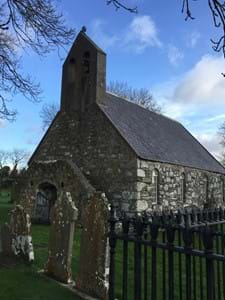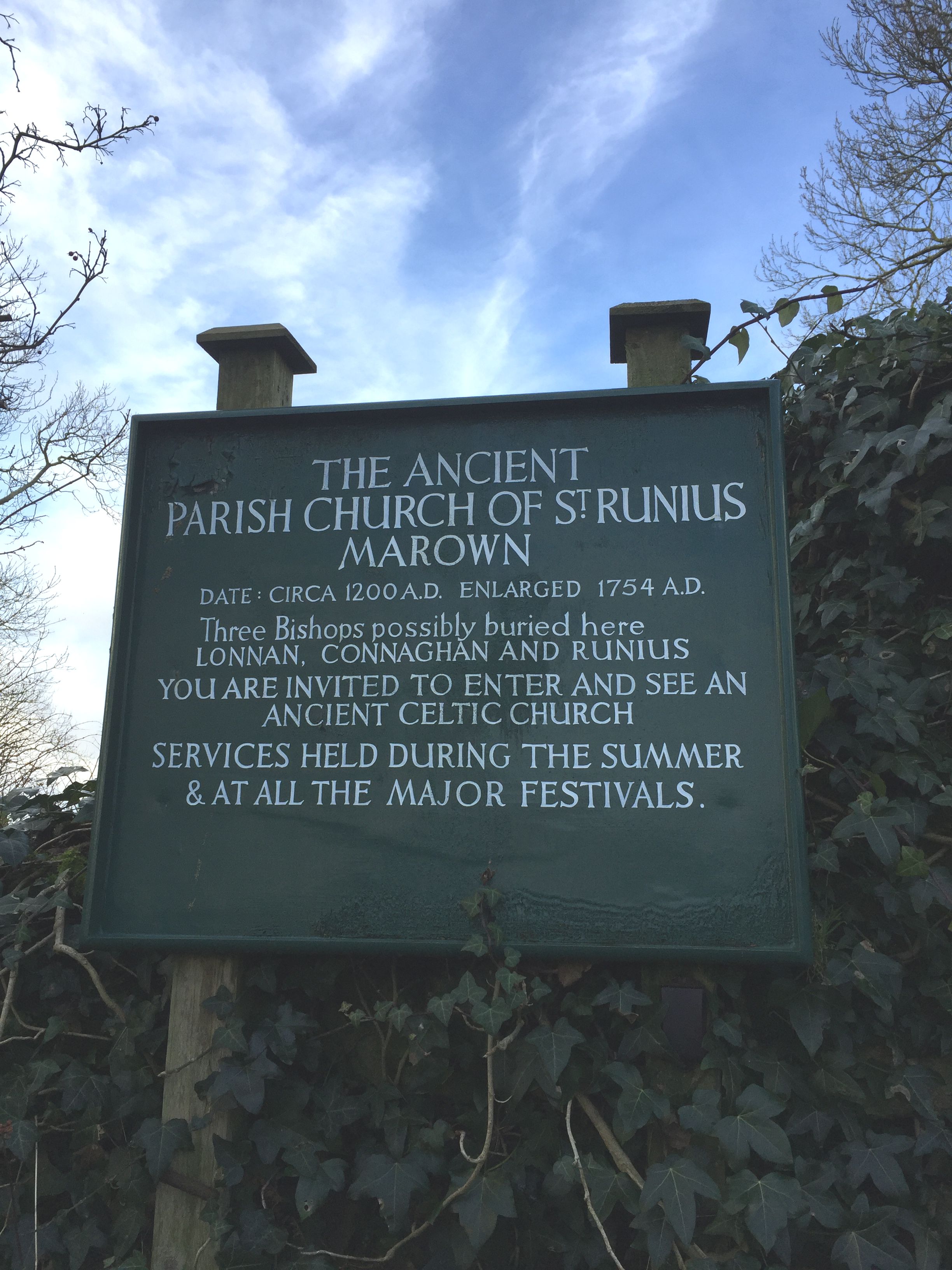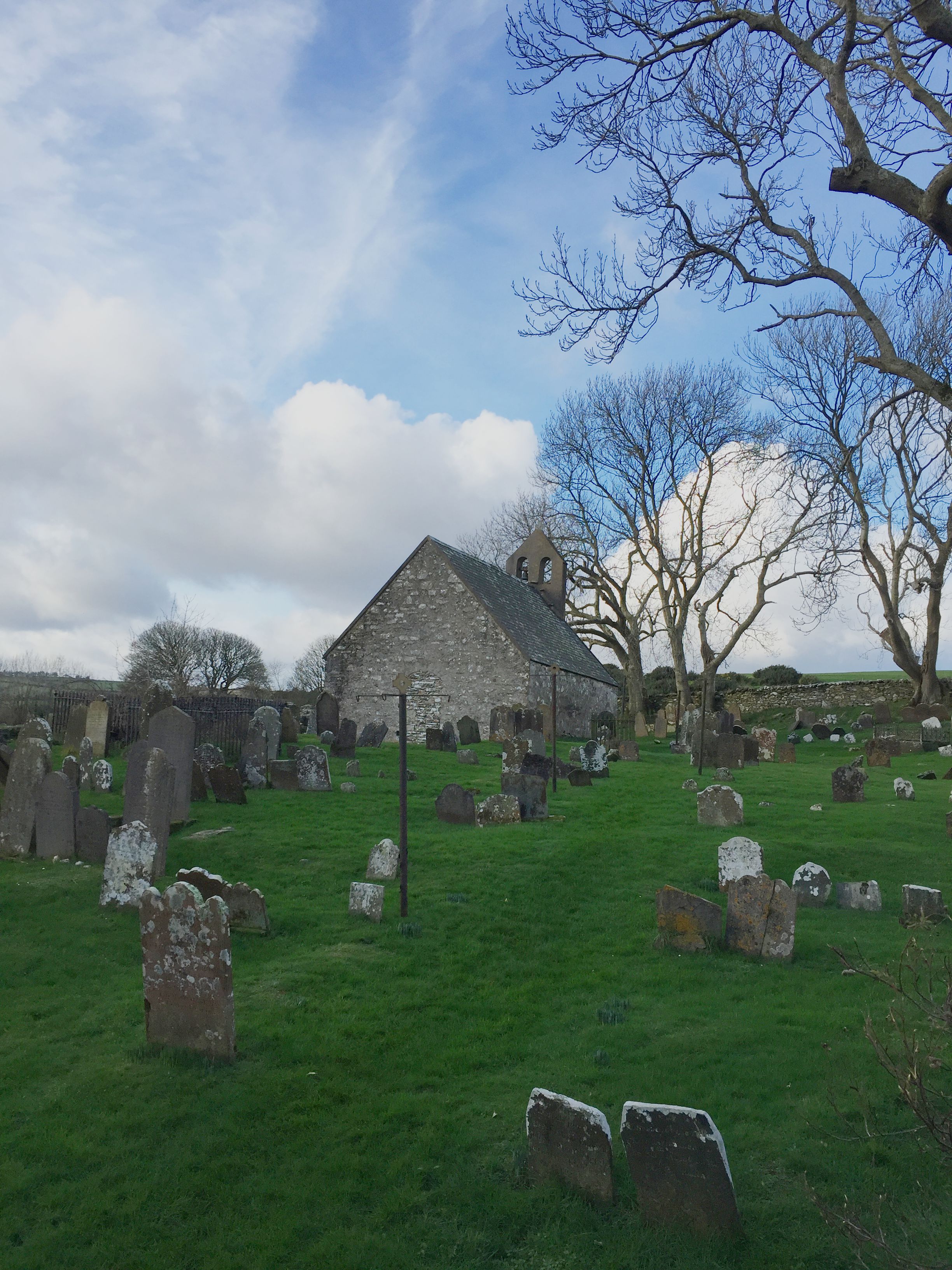An accidental discovery of the Ancient Parish Church of St Runius

This island never ceases to surprise and amaze me, and yesterday morning produced another such instance as we came across the Church of St Runius in Marown on our daily dog walk. We have both ridden our bikes, driven and walked past this little church countless times, and yet yesterday was the first time we stopped and noticed the sign next to a gate and a wide stile, leading to a churchyard filled with an assortment of graves and gravestones, from large tombs, to simple slate markers, all listing at varying angles to the ground.
On approaching the entrance at the rear of the church, we were surprised to find a sign pinned to the doorway requesting that visitors close the door behind them to stop pigeons entering the church. On trying the heavy latch on the door we found it to be open and so in we went.

Inside the church of St Runius
Inside we were immediately struck by the peace and tranquility of the building, which houses pews, an altar, a font, as well as some large stone Manx crosses. There are four windows on one side of the church, through which sunlight gently streamed, illuminating the whitewashed stone walls (although the gable end opposite to the altar has more than a tinge of green to it, which only adds to the character of the place).
It is obvious that far from being derelict, the church is still very much in use, and I imagine it must be a tremendous experience to attend a service here, in a centuries-old church perched on the side of a hill, sitting in one of the narrow, upright pews, with only the light from the oil lamps overhead to illuminate your hymn book.

Oil lamps inside the church
The information I’ve gathered below has been largely pilfered from a leaflet I picked up in the church together with a bit of online research. I hope you will excuse my plagiarism for the benefit of the content, which I found to be a fascinating insight into the varied history of this very special building.
The ancient parish church of St. Runius in Marown dates to the 12th century and was dedicated to St Runa, the third known Bishop of Sodor and Man, who is believed to be buried there, along with two other Bishops, Lonan and Connaghan.

Sign at the entrance to the graveyard and church
It is believed that Christian worship has been offered on this site since early in the 7th century, in a tiny building of sods and stone, known as a ‘keeill’. By the 12th Century, the keeill would have been replaced by a more substantial stone building, the earliest of which would have been a simple oblong structure with very thick walls.
There are no windows in the north wall, as in other ancient Manx churches, resulting from a verse in Jeremiah saying that evil came from the north, and to the invasion by the Vikings, who also came from the North.
Over the centuries, the church has been altered, extended and restored several times. Original entrances have been moved and blocked up, and at one point the font, which was very large was removed and placed on the outside of a wall, to make way for a Vicar’s Pew.
Around 1798, a western gallery was created to which access was gained by a double flight of stone steps built agains the west gable (still present today) - this gallery was for musicians playing violins and flutes.
There are several visible signs today of the many changes in the structure of the church which have taken place over time.
The construction of a new, larger parish church on the main Douglas to St John’s road in the mid 19th century led to the old church being used only as a mortuary chapel to the adjacent graveyard. The gallery was removed and its doorway built up and several other alterations took place during which some remarkable discoveries were made.
The church holds a number of early examples of Christian crosses, dating back as far as the 7th century. The best preserved of these crosses was only discovered when the doorway was heightened in 1906 and the slab was found to be in use as the lintel. The markings on these three stone monuments are considered unique amongst Manx crosses of the period.
Although the old church continued to be used for special services, it fell into disrepair and it was only after restoration by volunteers that it could be reopened on 9 August 1959.
Today, the church remains open and services are held at all the major festivals and monthly from April to October. The Church of St Runius is well worth seeking out, not only to experience a bit of Manx history and tradition, but also to enjoy a moment of perfect tranquility.

View of the church and graveyard from the entrance stile
